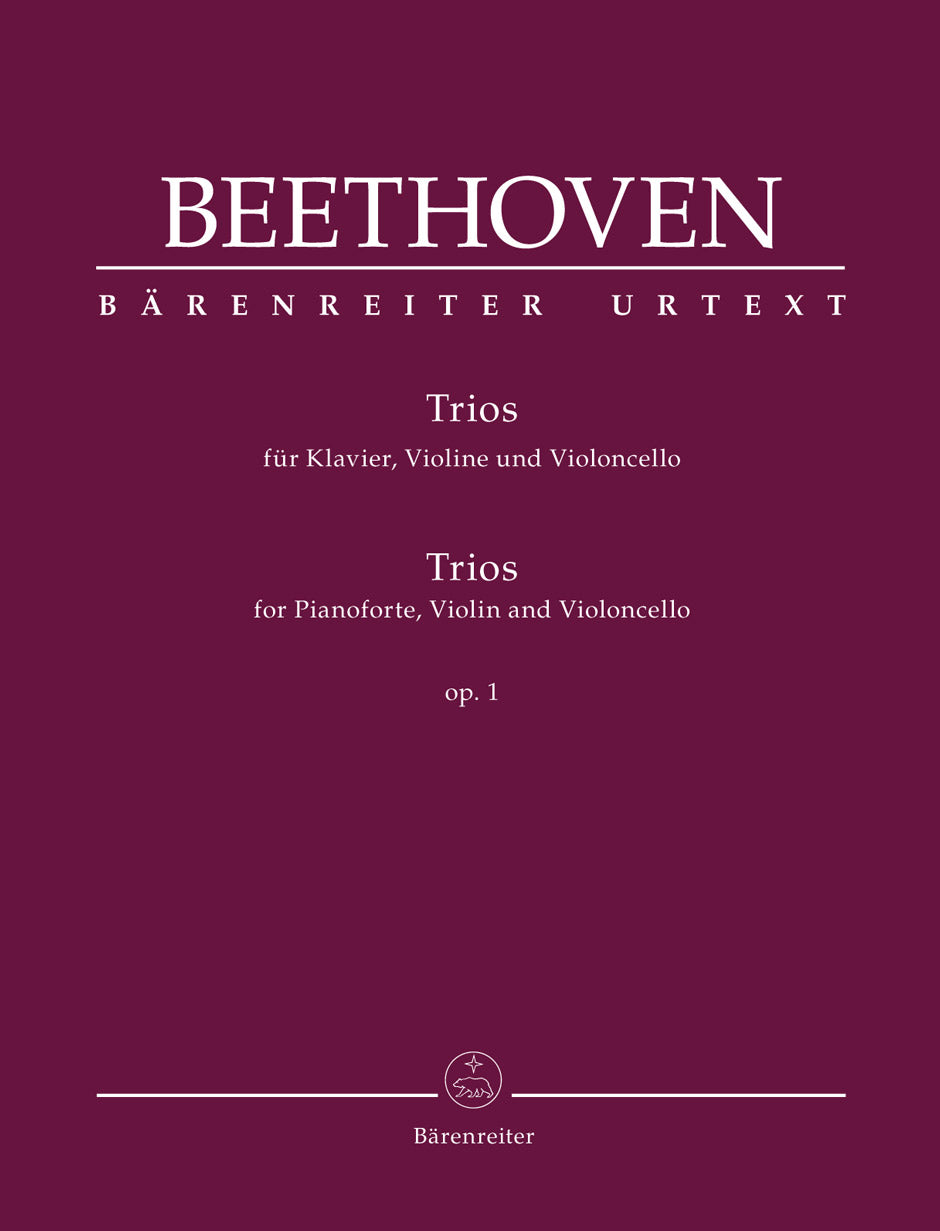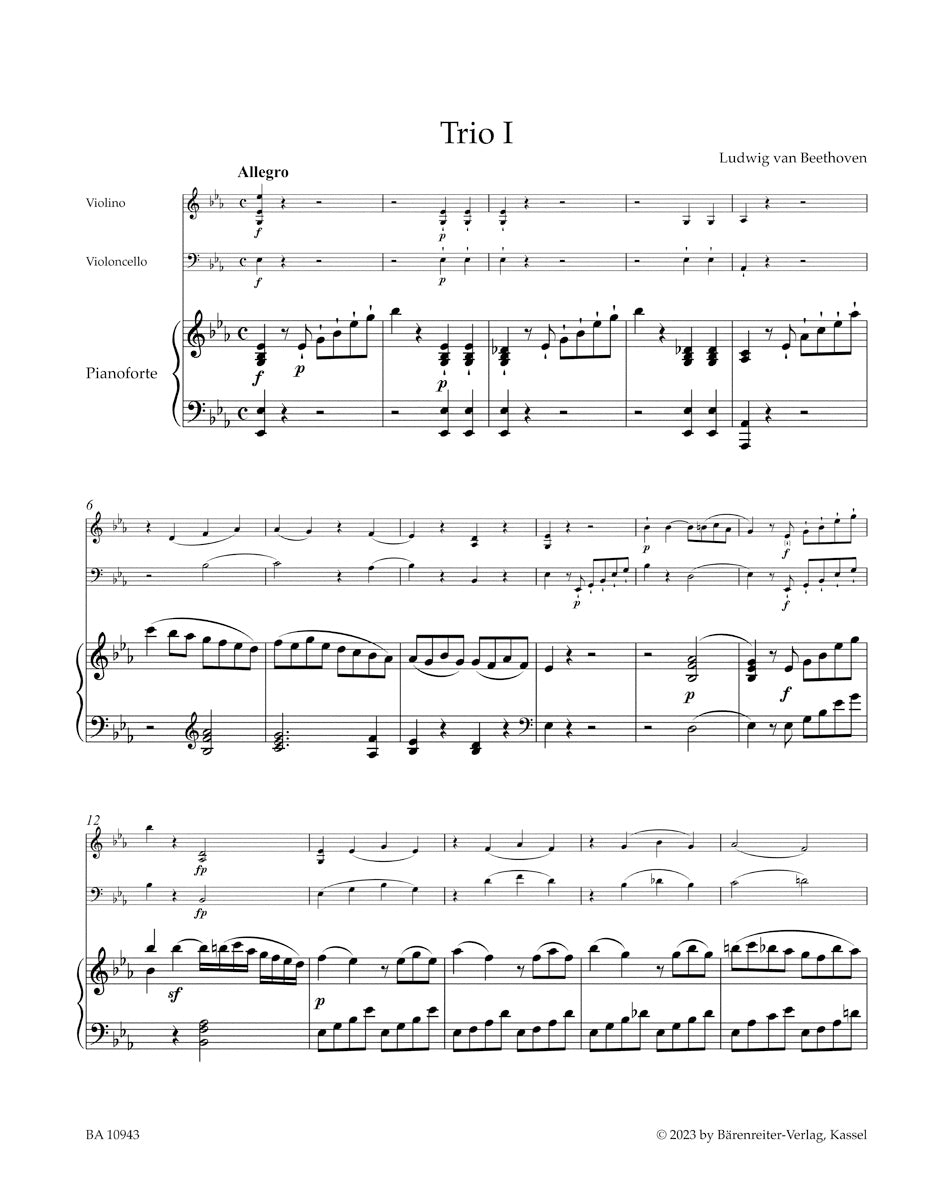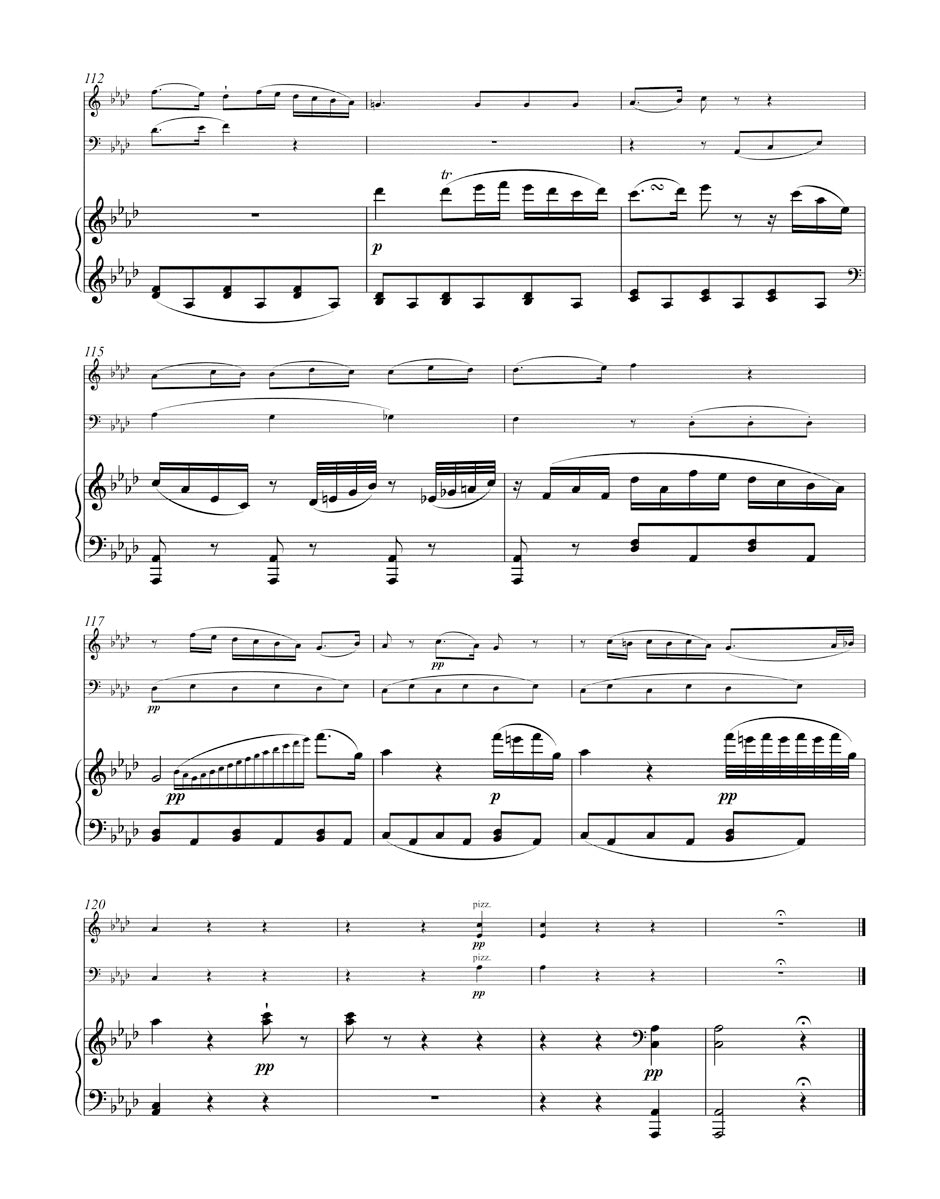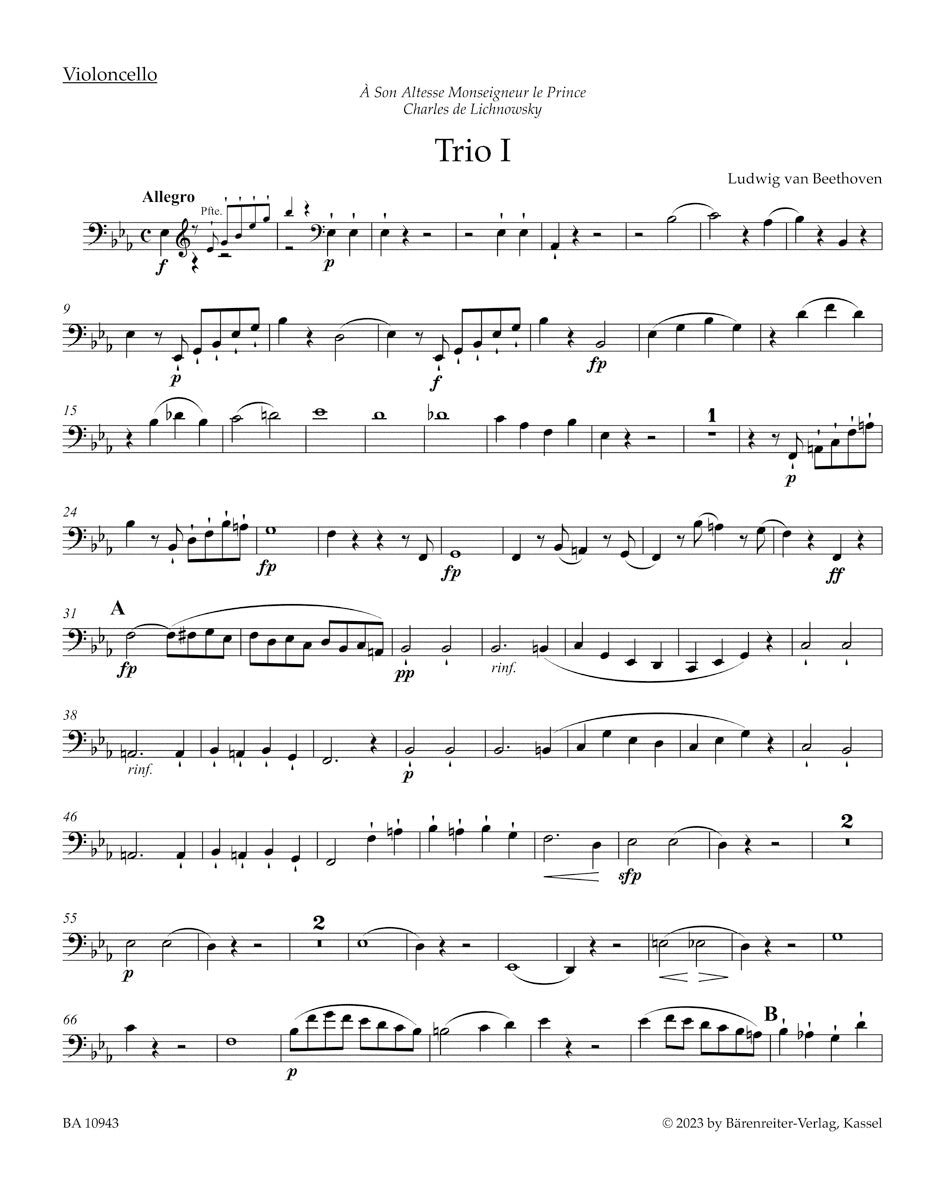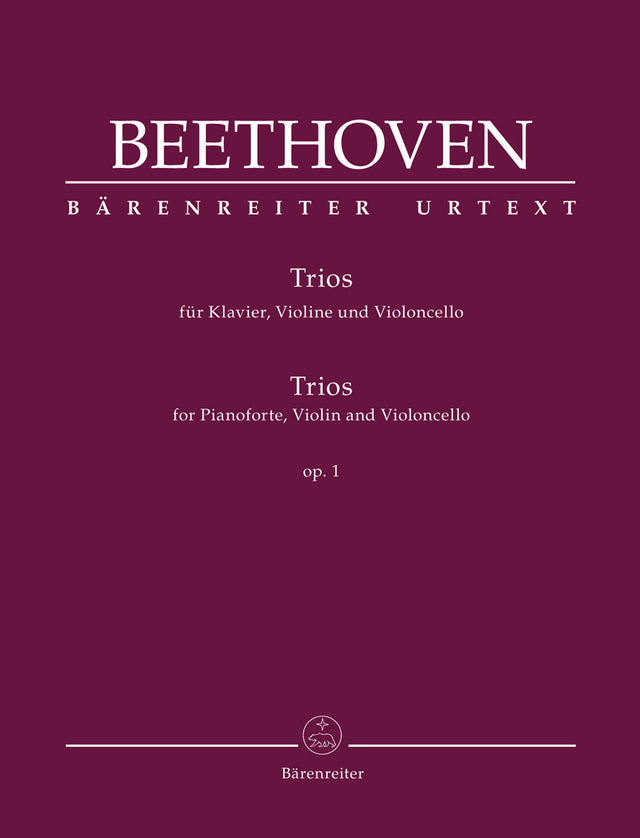Beethoven: 3 Piano Trios, Op. 1
In stock and typically ships within 1 business day.
- Composer: Ludwig van Beethoven (1770-1827)
- Editor: Jonathan Del Mar (1951-)
- Format: Score & Set of Parts
- Instrumentation: Piano Trio (Piano, Violin, Cello)
- ISMN:
- Size: 9.6 x 12.2 inches
- Pages: 220
- Urtext / Critical Edition
Description
Artaria had already published variations on a Mozart aria by Beethoven in 1793 under the highly symbolic opus number 1. However, the composer was not satisfied with this work and ensured that the opus number was transferred to another group of works which appeared in 1795, the three Piano Trios, Op. 1. His hope that these compositions would be worthy of his "opus 1" and would make quite some impression was to be fulfilled.
The list of the subscribers to the first printed edition of the trios is impressive because it includes influential aristocrats, many of whom were connected to Haydn as the dedicatees of his works. Apparently Haydn lent a helping hand here to his former student. Also Haydn's compositional influence on Beethoven can be found in many aspects of the trios. However, ultimately it will have been the innovative elements that astonished and delighted the audience of early Vienna: the virtuosity and scope of the unusually large-scale works, the unprecedented extended coda of the outer movements, the radicality of the dynamic contrasts and the introduction of remote keys as a means of musical expression.
In order to clarify some unclear readings, the editor and Beethoven specialist Jonathan Del Mar consulted Beethoven's markings in his, Op. 104 (an arrangement of the Trio, Op. 1, No. 3) – a source that has not been taken into consideration for any previous edition of this trio.
Works:
- Piano Trio in E-flat Major, Op. 1, No. 1
- Piano Trio in G Major, Op. 1, No. 2
- Piano Trio in C Minor, Op. 1, No. 3
Publishers use a lot of words to describe what they sell, and we know it can be confusing. We've tried to be as clear as possible to make sure you get exactly what you are looking for. Below are descriptions of the terms that we use to describe the various formats that music often comes in.
Choral Score
A score for vocalists that only contains the vocal lines. The instrumental parts are not there for reference. Generally, cheaper than a vocal score and requires multiple copies for purchase.
Facsimile
Reproductions of the original hand-written scores from the composer.
Full Score
For ensemble music, this indicates that the edition contains all parts on a single system (there are not separate parts for each player). In larger ensembles, this is for the conductor.
Hardcover
Hardbound. Generally either linen-covered or half-leather.
Orchestral Parts
Similar to a wind set, this is a collection of parts. In the case of strings, the numbers listed are the number of copies included, though generally these are available individually (often with minimum quantities required).
Paperback
When publishers offer multiple bindings (e.g. hardcover) or study scores, this is the "standard" version. If you're planning to play the music, this is probably what you want.
Performance / Playing Score
A score of the music containing all parts on one system, intended for players to share. There are not separate parts for each player.
Set of Parts
For ensemble music, this indicates that there are separate individual parts for each player.
Solo Part with Piano Reduction
For solo pieces with orchestra, this is a version that contains a piano reduction of the orchestra parts. For piano pieces, two copies are typically needed for performance.
Study Score
A small (think choral size) copy of the complete score meant for studying, and not playing. They make great add-ons when learning concertos and small chamber works.
Vocal Score
A score prepared for vocalists that includes the piano/organ part or a reduction of the instrumental parts.
Wind Set
For orchestral music, this is a collection of wind and percussion parts. The specific quantities of each instrument are notated.
With Audio
In addition to the printed music, the edition contains recordings of the pieces. This may be an included CD, or access to files on the internet.
With / Without Fingering (Markings)
Some publishers prepare two copies - a pure Urtext edition that includes no fingering (or bowing) suggestions and a lightly edited version that includes a minimal number of editorial markings.

